Wells Fargo
Brief Synopsis
Cast & Crew
Frank Lloyd
Joel Mccrea
Bob Burns
Frances Dee
Lloyd Nolan
Henry O'neill
Film Details
Technical Specs

Synopsis
In the 1840s, Ramsey MacKay, the driver for the struggling Wells Fargo mail and freight company, will secure an important contract if he delivers fresh oysters to Buffalo from New York City. When he rescues Justine Pryor and her mother, who are stranded in a broken wagon on his route, he doesn't let them slow him down and gives the ladies an exhilirating ride into Buffalo. He arrives in time to obtain the contract and is then sent by company president Henry Wells to St. Louis to establish a branch office. There he falls in love with Justine, who lives in St. Louis and is equally attracted to him. Though her parents want her to marry childhood sweetheart, Talbot Carter, Justine ends the relationship. Ramsey leaves her to start another office in San Francisco to capitalize on the California gold rush and takes woodsman Hank York with him. He is very successful in California, but when he takes the miners' money to San Francisco, he is attacked and robbed by outlaw Dan Slade. Though insurance recoups the miners' money, all of Ramsey's profits are lost. Some time later, when prospector Dan Timball asks Ramsey to send for his bride Lucy, she arrives, accompanied by Justine, whose parents have finally consented to her marriage. Over the next few years, Ramsey and Wells Fargo become very successful and his marriage to Justine produces Alice and Nick. Despite Ramsey's obsession with his work, their marriage remains a happy one. With the Civil War, however, Wells Fargo stagecoaches are continually attacked while attempting to ship gold to Washington. Ramsey meets with President Abraham Lincoln and agrees to support the Union, but because Justine's younger brother Nick was killed fighting for the Confederacy, she expects Ramsey to remain politically neutral. When Ramsey stands by his promise to Lincoln, Justine writes a note to Talbot, who is a Confederate officer, informing him of Ramsey's route. She realizes that she cannot send it, however, throws the note on the floor and returns to St. Louis with her children and her mother. On the way to Washington, Ramsey is attacked by Talbot's regiment and Talbot is killed, after which Ramsey discovers Justine's note on his body. Disillusioned, Ramsey completely severs relations with her. Many years later, after both Ramsey and the company have been very successful, he returns to St. Louis for a testimonial dinner. Alice, who is now seventeen and has not seen her father since she was a little girl, pleads with him to attend her birthday party the following night. There, he learns that it was Justine's embittered mother who betrayed him, and, at last, the couple are reconciled.

Director
Frank Lloyd
Cast

Joel Mccrea

Bob Burns

Frances Dee
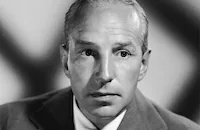
Lloyd Nolan

Henry O'neill

Mary Nash

Ralph Morgan

John Mack Brown
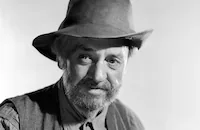
Porter Hall
Jack Clark

Clarence Kolb

Robert Cummings
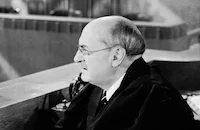
Granville Bates
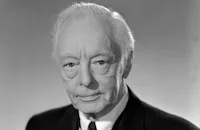
Harry Davenport

Frank Conroy
Brandon Tynan
Peggy Stewart
Bernard Siegel
Stanley Fields
Jane Dewey
Frank Mcglynn
Barlowe Borland
Hal K. Dawson

Lucien Littlefield
Jimmy Butler
Willie Fung
Sheila Darcy
Spencer Charters
Robert E. O'connor
Archie Twitchell
Dorothy Tennant
Clare Verdera
Lew Payton
Edward Earle

Henry Brandon
Herbert Heywood
Harry B. Stafford
Helen Dickson
Jerry Tucker
Francis Sayles
Lee Shumway
George Ovey
Pop Byron
Art Rowlands
Oliver Eckhardt
Lowell Drew
Bert Lindley
Sid D'albrook
Ivan Thomas
Hal Price
Dick Rush
Gertrude Simpson
Carol Holloway
Philip Morris
Erville Alderson
Bob Mckenzie
Paul Kruger
Blue Washington
Louis Natheaux
Charles Mcavoy
James Quinn
Ernie Adams
Richard Cramer
Ray Hanford
Mike Pat Donovan
C. L. Sherwood
Bruce Mitchell

William Mccormick
Jack Baxley
Julian Rivero
Frank Austin
Paul Newlan
Harry Hayden
Bill Begg
Ralph Mccullough
Jack Gardner
Bert Moorhouse
Sherry Hall

Scotty Beckett
Ferdinand Munier

Fern Emmett
James Burtis
Marie Burton
Norah Gale
Harriette Haddon
Gwen Kenyon
Joyce Mathews
Carol Parker
Alma Ross
Dorothy White
Lane Chandler
Buddy Roosevelt
Philip Kieffer
Eddie Dunn
Ruth Warren
Edward J. Lesaint
Charles W. Hertzinger
Dora Early
Fritzi Brunette
Mary Mersch
Joe Gilbert
Alphonse Martell
William H. O'brien
Wade Boteler
Shirley Coates
Tom Ung
Dell Henderson
Joseph E. Bernard
Chester Gan
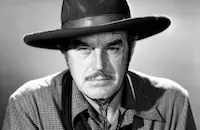
Harry Woods

Emmett Vogan
Jack Perrin
Babs Nelson
Danny Sullivan
A. D. Sewall
Charles Sullivan
George Magrill
Bob Stevenson
Al Sullivan
Hal Craig
Jerry Larkin
Al Ferguson
Frank Erickson
D'arcy Corrigan
Arthur Aylesworth
Ronnie Cosbey

Lee Phelps
Franklin Parker
David Durand
Mitchell Ingraham
Sam Ash
Bernard Suss
Ben Hendricks
Monte Vandergrift

Edward Keane
Kathryn Sheldon
Monte Montague
Ed Brady
Ray Burgess
Vester Pegg
Barney M. Furey
Charles Haefeli
Charles Binley
Chief Seeakahwa
George Guhl
Richard Coleman
Darby Jones
Arthur T. Foster

Howard Mitchell
Harry Semels
Marty Faust
George Burton
Billy Arnold
Stanley King
Forbes Murray
Cyril Ring
Freeman Wood
Eric Mayne
Tom Curran
Helen Davis
Beth Hartman
Hazel Keener
Nell Craig
Gloria Williams
Ethel Clayton
Ann Evers
Dorothy Stevens
Dolly Jarvis
Jeanne Lorraine
Suzanne Rhodes
Irene Coleman
June Glory
Florence Wix
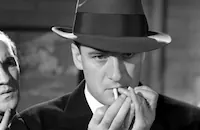
Elliott Sullivan
Cy Schindell
Charles Sherlock
Ernest Shield
Frank Mills
Gus Glassmire
Earl Gunn
Hayden Stevenson
Hal Taliaferro
Lillian Dean
Jerry Storm
Hal Budlong
Lester Dorr
Fritzi Dugan
Grant Peters
David Newell

Gertrude Astor
Dick Allen
Harry Strang
Oscar Rudolph
Pietro Sosso
Jack Curtis
T. C. Jack
Crew
Duke Atteberry
Hugh Bennett
John Boland
John Cope
Hans Dreier
Howard Estabrook
Howard Estabrook
Ralph Freed
A. E. Freudeman
Gerald Geraghty
John Goodman
Edith Head
Frederick Jackson
Gordon Jennings
Stuart N. Lake
Burton Lane
William Le Baron
Harold Lewis
Jack Leys
Frank Lloyd
Boris Morros
Seena Owen
Loren L. Ryder
Paul Schofield
Theodore Sparkuhl
William Tummel
Eddie Welch
Victor Young
Adolph Zukor

Film Details
Technical Specs

Award Nominations
Best Sound
Best Sound Editing
Articles
Wells Fargo
After playing a World War I aviator in The Lost Squadron (1932) and a decisive man of action in The Most Dangerous Game (1932), McCrea had proved himself worthy of films set out of doors. Wells Fargo (1937) remains a significant title in his resume for marking his debut in westerns and also his first time acting opposite Frances Dee, whom he had married in 1933. Budgeted at $1,500,000, the film's working title was An Empire Is Born, and had been intended by Paramount as a vehicle for Fred MacMurray, Frances Farmer, and Randolph Scott (who had been a lowly extra in DeMille's Dynamite). When production got underway in mid-July of 1937 with McCrea (on loan from the Samuel Goldwyn Company) and Dee cast in the lead roles, Paramount boasted that its recreation of San Francisco's legendary Portsmouth Square was the largest set ever created on location, occupying seven acres and comprising thirty-two buildings. Location shooting spread to Napa Valley, Columbia, Chico, Angel's Camp, and Sonora, before cast and crew returned to Paramount for interior shooting on August 24, 1937.
Wells Fargo marked an early screen appearance by actor Robert Cummings, then a Paramount contract player who had only been in Hollywood for two years. A graduate of New York's American Academy of Arts, Cummings had faked a British accent to win a job on Broadway and came to Hollywood sporting a western twang. No small wonder Cummings wound up in a frontier tale, though his forte in the coming years was in light comedy. Alfred Hitchcock put the actor to the action hero test by casting him in Saboteur (1942), after which Cummings went to war as a flight instructor with the Army Air Corps. Also seen in supporting roles in Wells Fargo are former cowboy star Johnny Mack Brown, reliable character player Lloyd Nolan, Ralph Morgan, Porter Hall, Frank Conroy, Henry Brandon, Republic western actress Peggy Stewart (in her film debut) and child actor Scotty Beckett.
Wells Fargo had its world premiere on December 30, 1937, in San Francisco. The film's original run time of 115 minutes was cut down to 97 minutes for general release. Reviews inclined toward the favorable, with qualifications; writing in The New York Times, critic Frank Nugent found Wells Fargo "admirably done" but chastised the filmmakers for their attempt "to crowd too much onto its canvas." Promotional materials heralded Frank Lloyd's Wells Fargo, likely in deference to Lloyd's Oscar® nomination for Mutiny on the Bounty (1935). Not well remembered fifty years after his death, the Glasgow-born Lloyd had been a founding member of the Academy of Motion Picture Arts and Sciences and had served as Academy President between 1934 and 1935. His Cavalcade (1933) and Mutiny on the Bounty had both won Best Picture Oscars® but the best Wells Fargo could do was a nomination for Best Sound, for which it lost to John Ford's The Hurricane (1937). As for Joel McCrea, he had nearly a decade more of suit-and-tie roles ahead of him (notably, in Hitchcock's Foreign Correspondent (1940) and several films for Preston Sturges) before switching over to westerns exclusively with the success of The Virginian (1946).
Producer: Frank Lloyd
Executive Producer: William LeBaron
Director: Frank Lloyd
Screenplay: Paul Schofield, Gerald Geraghty, Frederick J. Jackson, Stuart N. Lake
Music: Victor Young
Cinematography: Theodor Sparkuhl
Editor: Hugh Bennett
Art Direction: Hans Dreier, John B. Goodman
Cast: Joel McCrea (Ramsay MacKay), Bob Burns (Hank York), Frances Dee (Justine Pryor), Lloyd Nolan (Dal Slade), Henry O'Neill (Henry Wells), Mary Nash (Mrs. Pryor), Ralph Morgan (Nicholas Pryor), Scotty Beckett (Young Nicholas Pryor), Johnny Mack Brown (Talbot Carter), Jack Clark (William Fargo), Robert Cummings (Dan Trimball), Frank Conroy (Ward), Peggy Stewart (Alice MacKay), Henry Brandon (Larry), Frank McGlynn (Abraham Lincoln).
BW-97m.
by Richard Harland Smith
Sources:
Joel McCrea: Riding the High Country by Tony Thomas (Riverwood Press, 1991)
Last of the Cowboy Heroes: Randolph Scott, Joel McCrea and Audie Murphy by Robert Nott (McFarland & Company, Inc., 2000)

Wells Fargo
Quotes
Trivia
Paramount claimed the set to recreate San Francisco's Portsmouth Square was the largest ever built. Seven acres of a hilltop were leveled and graded, and 32 buildings were erected.
Assistant propman, Jack Leys, accidentally shot himself when he reached into the prop chest for a gun.
Notes
The working title of this film was An Empire Is Born. The title card of the film reads "Frank Lloyd's Wells Fargo." According to a news item in Variety on July 14, 1937, the picture was budgeted at $1,500,000. The studio initially announced Frances Farmer, Fred MacMurray, and Randolph Scott as the stars. This was the first co-starring film for Joel McCrea and Frances Dee, who were husband and wife in real life. McCrea was borrowed from Samuel Goldwyn for the film. Rebecca Wassem was originally cast as "Lola Montez," but she was replaced by Sheila Darcy, who was then signed to a stock contract by Paramount. Locations included the Napa Valley, Angel's Camp, Columbia, Parrott's Ferry, Chico and Sonora, CA. Hollywood Reporter announced on August 24, 1937 that director Frank Lloyd had moved the company to Paramount's ranch. The company claimed the set was the largest ever built; to recreate San Francisco's Portsmouth Square as it looked in the 1850s and 1860s, a hilltop was levelled and seven acres were graded for the set, which consisted of thirty-two buildings. Jack Leys, the assistant propman for the film, was reportedly wounded when he reached into the prop chest for a gun while on location at Sonora and accidentally shot himself. The picture was nominated for an Academy Award in the sound recording category.

Miscellaneous Notes
Released in United States 1937
Released in United States 1937














